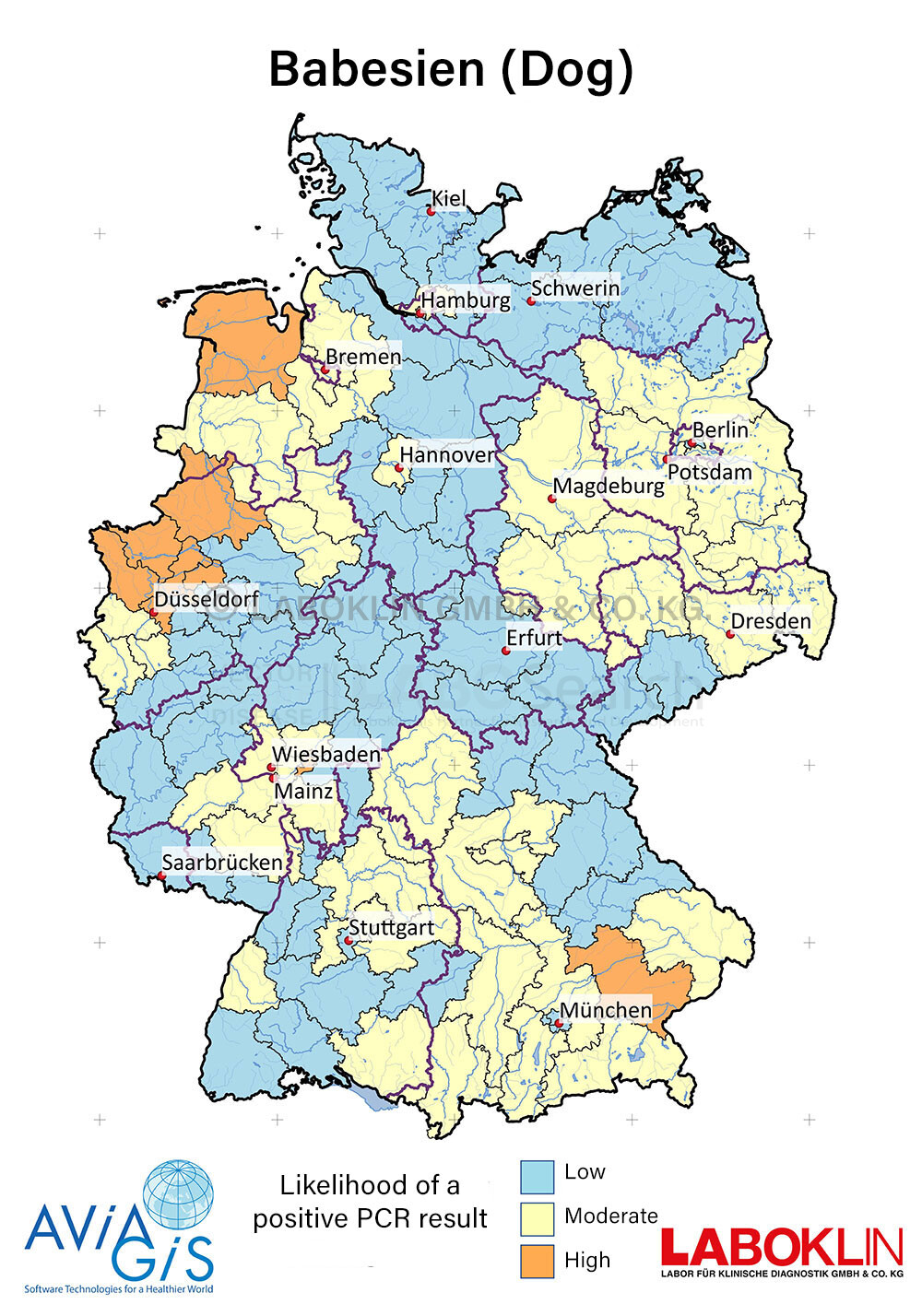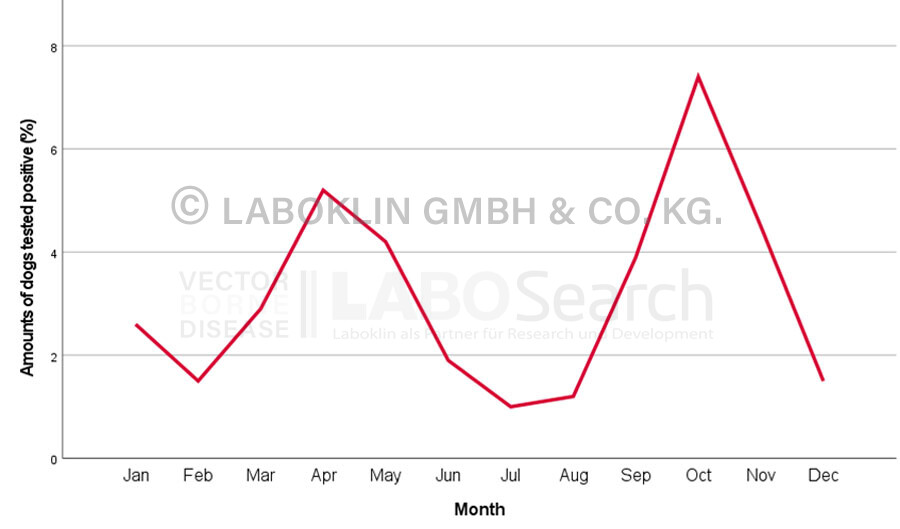- Canine babesiosis
- Multiple species:
- Babesia canis (endemic in Germany)
- Babesia gibsoni (mainly linked to stays abroad)
- Babesia vogeli (mainly linked to stays abroad)
- Babesia vulpes (mainly linked to stays abroad)
- In Europe transmission of the pathogen via ticks
- Babesia canis: Dermacentor reticulatus
- Babesia gibsoni: Rhipicephalus sanguineus
- Babesia vogeli: Rhipicephalus sanguineus
- Babesia vulpes: Ixodes hexagonus as suspected vector
- Possible transmission by blood transfusions
- Direct detection methods
- PCR (positive result indicative for acute infection, species differentiation by sequencing)
- Blood smears out of capillary blood (less sensitive compared to PCR testing)
- Indirect detection methods (positive result indicative for pathogen contact in the past, paired serum samples necessary for detection of potential infection)
- Antibody-ELISA (enzyme-linked immunosorbent assay)
- IFAT (immunofluorescence antibody test)
- Subclinical to severe disease possible
- Fever as the most prominent clinical sign
- Hemolytic anemia and hemoglobinuria as the most important laboratory diagnostic parameters
Dog (2007 – 2023, n = 38,525)
Timeframe | PCR | IFAT/ELISA |
2021-2023 | 7.3% | 12.7% |
2017-2020 | 3.3% | - |
2013-2016 | 3.3% | - |
2007-2012 | 2.7% | - |



